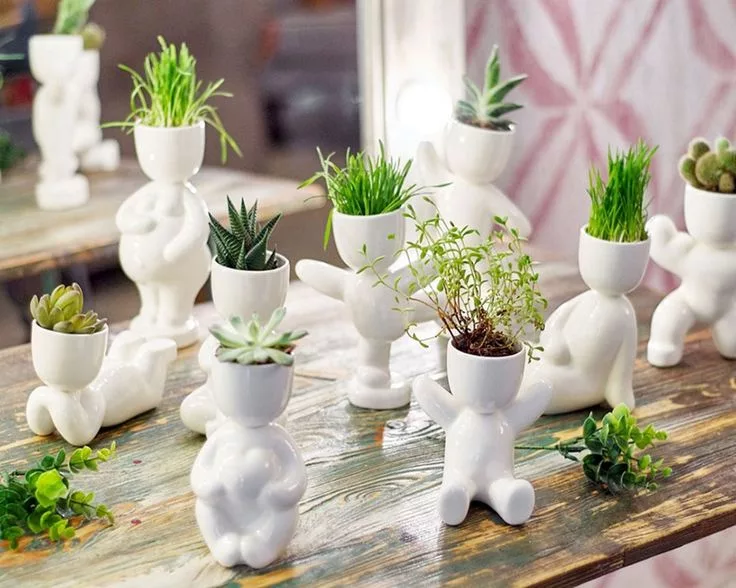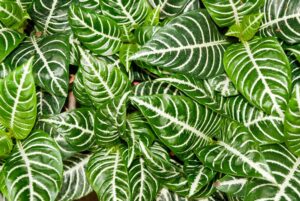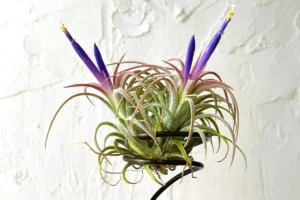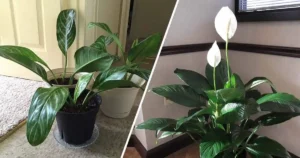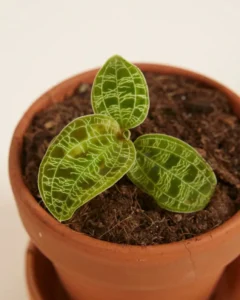The world of tiny indoor plants is brimming with charm and endless possibilities, offering a variety of options to enhance your small space. Whether you’re a seasoned plant enthusiast or just beginning your green journey, these indoor mini plants can bring a touch of nature into every corner of your home. Let’s dive into the fascinating realm of tiny indoor plants and discover how they can transform your living space.
On This Page
Why Tiny Indoor Plants Are Perfect for Your Space?
Tiny indoor plants offer more than just aesthetic appeal—they’re a practical choice for enhancing your living space. Their compact size makes them ideal for small spaces, allowing you to enjoy the benefits of greenery without overwhelming your home. Let’s explore the top tiny indoor plants that can bring life and freshness to even the smallest corners of your space.
Baby’s Tears Plant: A Delicate Delight
The Baby’s Tears Plant, scientifically known as Soleirolia soleirolii, is a true gem for indoor gardeners. This plant’s name perfectly captures its delicate nature, with tiny, round leaves that cascade gracefully from the plant. The leaves are so small and dense that they create a soft, lush carpet of greenery, making it a wonderful choice for adding texture to your indoor garden.
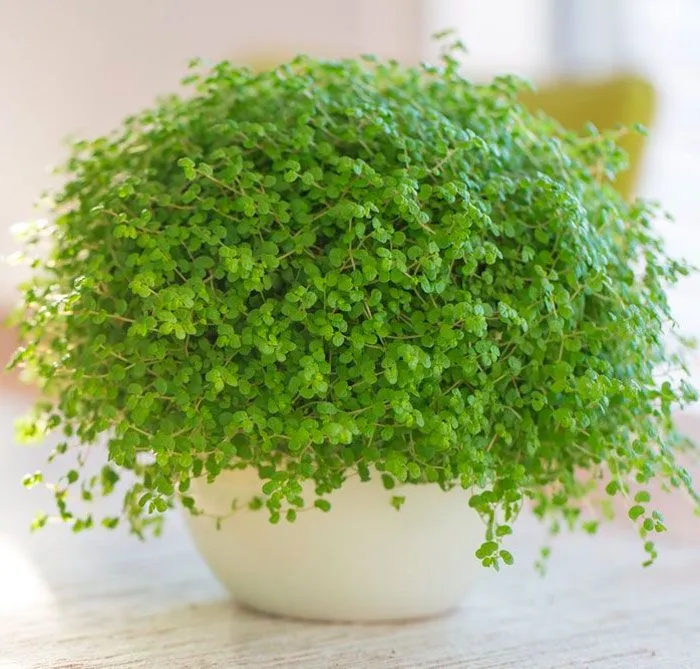
To keep Baby’s Tears thriving, it’s best to place it in a small terrarium or under a glass cloche. These environments help to maintain the high humidity that this plant craves. The terrarium’s glass enclosure also helps to diffuse light, providing the bright, filtered sunlight that Baby’s Tears needs to grow. If you don’t have a terrarium, you can still enjoy this plant by placing it in a well-lit spot away from direct sunlight.
In terms of care, Baby’s Tears is relatively low-maintenance. It enjoys regular watering but dislikes sitting in water, so good drainage is essential. This plant grows to about 4 inches in height and can spread up to 36 inches wide, making it perfect for filling small spaces with lush, green foliage. It’s especially effective in areas where you want to create a soft, natural look, such as on shelves, windowsills, or as ground cover in a larger plant display.
String of Pearls: The Elegant Succulent
The String of Pearls (Senecio rowleyanus) is one of the most visually striking succulents you can add to your indoor garden. Its unique, bead-like leaves dangle gracefully from the plant, resembling a string of green pearls. This unusual leaf shape is not just for show—it’s an evolutionary adaptation that helps the plant conserve water in its native arid environments of South Africa.
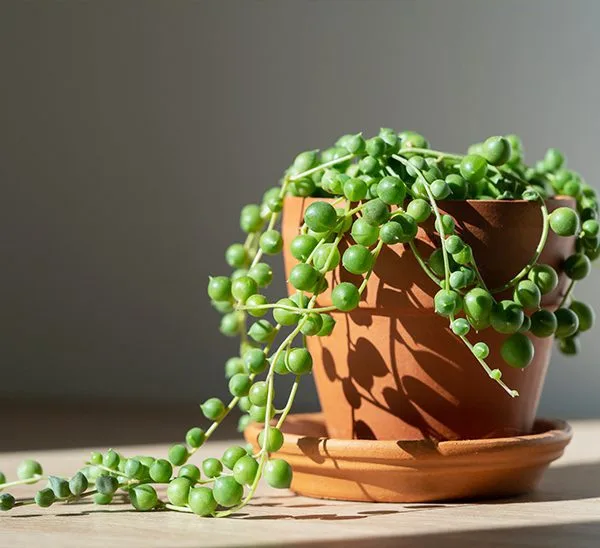
This succulent is ideal for hanging baskets, where its long strands can cascade down, creating an elegant, trailing effect. It thrives in warm conditions with bright, indirect light, although it can tolerate some direct sunlight, especially in the morning. The plant’s spherical leaves are designed to minimize water loss, making the String of Pearls drought-tolerant and perfect for those who might forget to water their plants regularly.
Caring for String of Pearls involves allowing the soil to dry out between waterings, as overwatering can lead to root rot. It’s also important to prune the plant occasionally to maintain its shape and prevent it from becoming too leggy. However, keep in mind that this plant is toxic to both humans and pets, so it should be kept out of reach of children and animals.
African Violet: A Classic Revisited
African Violets (Saintpaulia) have long been a favorite among indoor gardeners, and they’re currently enjoying a resurgence in popularity. These compact, free-flowering plants are prized for their vibrant, velvety blooms, which can range in color from deep purples and blues to pinks and whites. Newer varieties feature ruffled or picotee blooms, adding even more visual interest to these classic plants.

One of the reasons African Violets are so beloved is their ability to bloom almost continuously throughout the year, provided they receive the right care. They thrive in small pots, which encourage them to produce flowers rather than focusing on root growth. To keep African Violets healthy, they should be kept in a warm environment with bright, indirect light. Direct sunlight can scorch their leaves, so it’s best to place them in a spot where they receive filtered light.
Watering African violets can be a bit tricky, as they prefer to be kept evenly moist but not waterlogged. It’s best to water them from the bottom by placing the pot in a saucer of water and allowing the plant to soak up moisture from the roots. Regular feeding with a balanced fertilizer will keep them lush and flowering. With a typical size of 6 to 9 inches in both height and width, African violets are perfect for brightening up any indoor space, from windowsills to tabletops.
Air Plants: The Ultimate Low-Maintenance Greenery
Air Plants, or Tillandsia, are some of the most fascinating plants you can grow indoors. Unlike most plants, Air Plants don’t need soil to thrive. Instead, they absorb moisture and nutrients directly from the air through specialized scales on their leaves. This unique adaptation makes them incredibly versatile and allows for a wide range of creative display options.
You can mount Air Plants on driftwood, arrange them in decorative glass containers, or even attach them to a piece of coral or rock. Because they don’t require soil, they can be placed almost anywhere, making them ideal for adding greenery to spaces where traditional plants might not thrive.
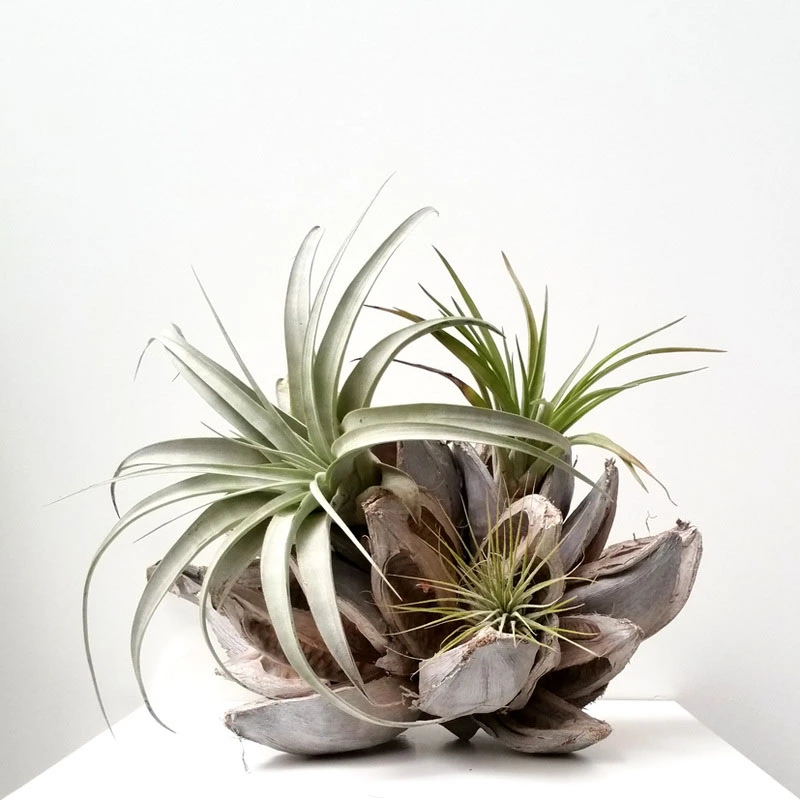
Air Plants are extremely low-maintenance. They require bright to medium-indirect light and should be soaked in water for about 20–30 minutes once a week. After soaking, it’s important to shake off any excess water and allow the plant to dry completely before placing it back in its display. This helps prevent rot, which is one of the few issues that can affect Air Plants.
These plants grow slowly, which means they won’t outgrow their space quickly, making them perfect for long-term displays. Depending on the species, mature air plants can range in size from just a couple of inches to over a foot in height, making them a versatile option for any indoor garden.
Burro’s Tail: The Trailing Beauty
Sedum morganianum, commonly known as Burro’s Tail or Donkey’s Tail, is a popular succulent known for its thick, fleshy leaves that grow on long, trailing stems. This plant is perfect for hanging baskets or high shelves where its trailing vines can cascade down, creating a lush, green waterfall effect.

Burro’s Tail is highly drought-tolerant, thanks to its succulent nature. Its fleshy leaves store water, allowing it to survive periods of neglect, making it an excellent choice for those who prefer low-maintenance plants. It thrives in bright, indirect light, although it can handle some direct sunlight, especially in the morning.
For optimal growth, plant Burro’s Tail in a well-draining, sandy cactus mix to prevent root rot. This plant is also easy to propagate—if a stem breaks off, you can let the broken end callus over, then place it in soil to encourage new roots to grow. With the right care, Burro’s Tail can reach lengths of 1 to 4 feet and spread 1 to 2 feet wide, making it a striking addition to any indoor garden.
Woolly Thyme: Aromatic and Adorable
Woolly Thyme (Thymus pseudolanuginosus) is a delightful plant that combines visual appeal with a pleasant fragrance. This low-growing plant is covered in soft, fuzzy leaves that are irresistible to touch, making it a tactile addition to your indoor garden. Its tiny, delicate flowers add a hint of color, making Woolly Thyme as charming as it is functional.

This plant is perfect for areas where you want to add a touch of greenery and aromatherapy. Woolly Thyme grows slowly, reaching only about 1 inch in height but gradually spreading to form a dense mat up to 12 inches wide. It’s ideal for sunny spots, where it can bask in bright light to maintain its lush appearance and encourage flowering.
Woolly Thyme prefers to be watered sparingly—only when the soil feels dry to the touch. Its unique texture and subtle, pleasant fragrance make it a great choice for adding a sensory experience to your indoor garden. Whether used as a ground cover in a container or as a charming accent in a sunny spot, woolly thyme’s soft, aromatic presence is sure to enhance any environment.
Scotch Moss: A Touch of Whimsy
Scotch Moss (Arenaria verna) is a plant that adds a whimsical, fairy-tale quality to your indoor garden. Its bright green, mossy foliage evokes images of enchanted forests, making it a perfect addition to terrariums or areas where you want to create a magical atmosphere.
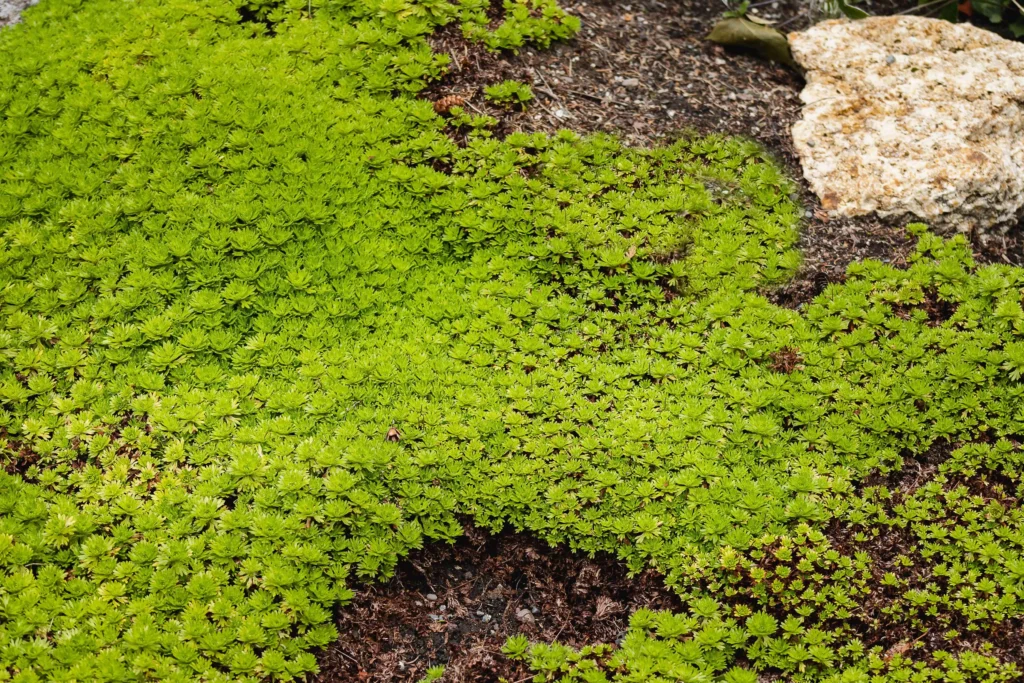
Native to the cool, moist environments of Scotland, Scotch Moss thrives in similar conditions indoors. It prefers bright, indirect light, ideally from a north-facing window, which helps maintain its vibrant color without risking sunburn. Frequent misting is essential to keep its chartreuse leaves perky and lush, as this plant loves humidity.
When Scotch Moss is happy in its environment, it may reward you with tiny white flowers, adding an extra touch of charm. This plant stays compact, growing just 1 to 2 inches in height and 8 to 10 inches in width, making it perfect for small spaces. Whether you’re creating a mini garden, adding a soft ground cover to a larger display, or simply looking for a plant that brings a bit of magic to your home, Scotch Moss is an excellent choice.
Venus Fly Trap: The Carnivorous Curiosity
The Venus Fly Trap (Dionaea muscipula) is one of the most fascinating plants you can add to your indoor garden. Known for its unique, trap-like leaves that snap shut when triggered, the Venus Fly Trap is both a conversation starter and a functional plant that can help control small insect pests in your home.
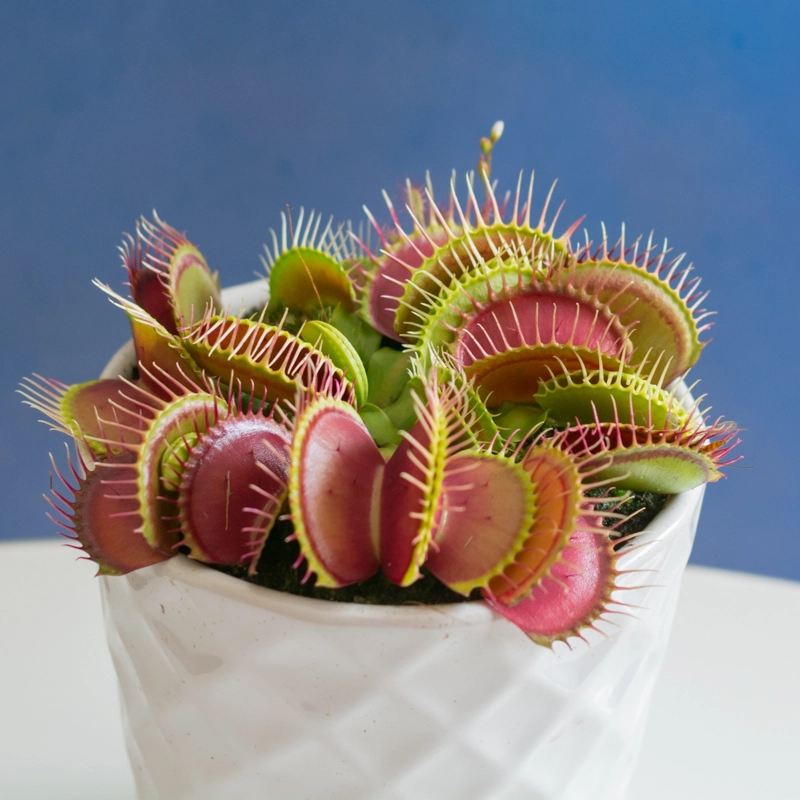
The plant’s distinctive leaves are equipped with sensitive trigger hairs. When these hairs are touched twice, the leaves close rapidly, trapping insects inside. This feeding mechanism not only provides nutrients for the plant but also makes it an intriguing addition to your collection.
Caring for a Venus Fly Trap requires a bit of specialized knowledge. The plant thrives in a growing medium of peat moss, which retains moisture while being free of minerals that could harm the plant. It’s crucial to water the Venus Fly Trap with distilled water, as tap water can contain minerals that are detrimental to its health.
This plant also needs bright, direct sunlight for at least four hours a day to thrive. Cool winter temperatures are important for ensuring the plant’s dormancy period, which is essential for its long-term health. With proper care, Venus Fly Traps can grow to a mature size of 6 to 12 inches in height and 6 to 9 inches in width. Adding a Venus Fly Trap to your indoor garden is sure to make it a unique and practical space.
Purple Shamrock: A Bold Statement
The Purple Shamrock (Oxalis triangularis), also known as False Shamrock, is a striking plant that adds a bold splash of color to any indoor garden. Its deep purple, triangular leaves are almost black, giving the plant a dramatic and elegant appearance. What makes this plant even more captivating is the way its leaves fold up like an umbrella at night and unfurl again in the morning, adding a dynamic element to its display.
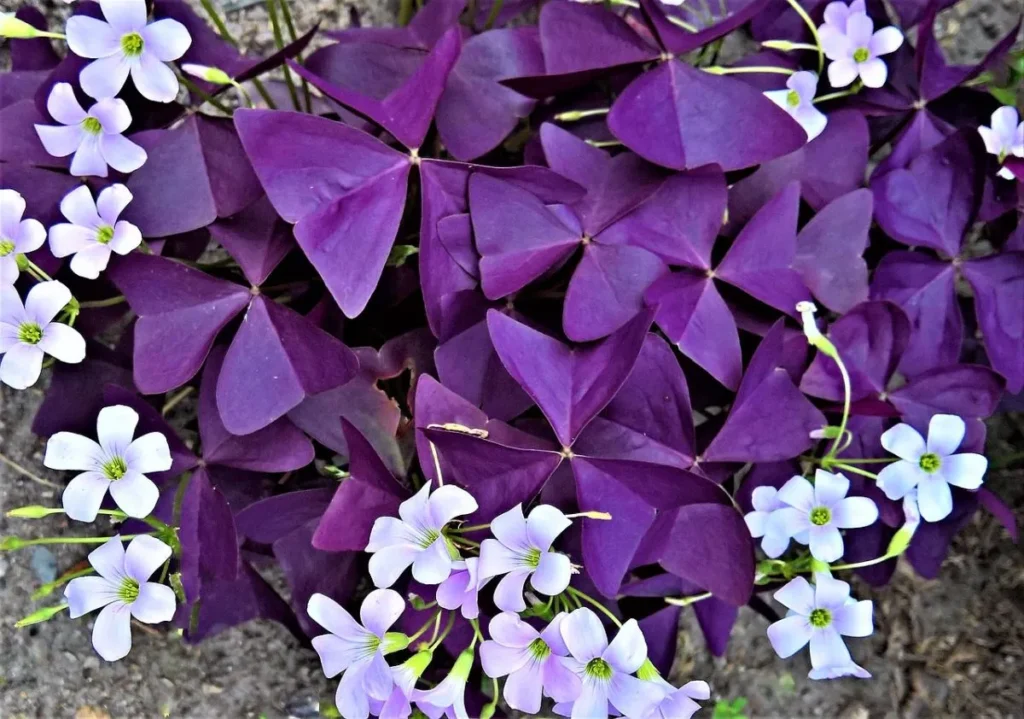
In addition to its stunning foliage, the Purple Shamrock produces delicate flowers in shades of white, pink, or lavender, providing a gentle contrast to its dark leaves. This plant thrives in bright light, though it’s important to keep it out of direct sunlight, which can scorch its leaves. It prefers well-draining soil and should be watered when the top inch of soil feels dry.
The Purple Shamrock is a compact plant, typically growing ½ inch to 1 foot in height and 1 to 2 feet in width, making it an attractive addition to small spaces. However, it’s important to note that this plant is toxic to both animals and humans, so it should be kept out of reach of pets and small children.
Kalanchoe: The Flowering Succulent
Kalanchoe is a diverse genus of succulents known for their vibrant flowers and ease of care. The most commonly found species in nurseries is Kalanchoe blossfeldiana, which is prized for its bright, colorful blooms that can last for weeks. This plant is a member of the Crassulaceae family, closely related to other popular succulent houseplants like the jade plant.
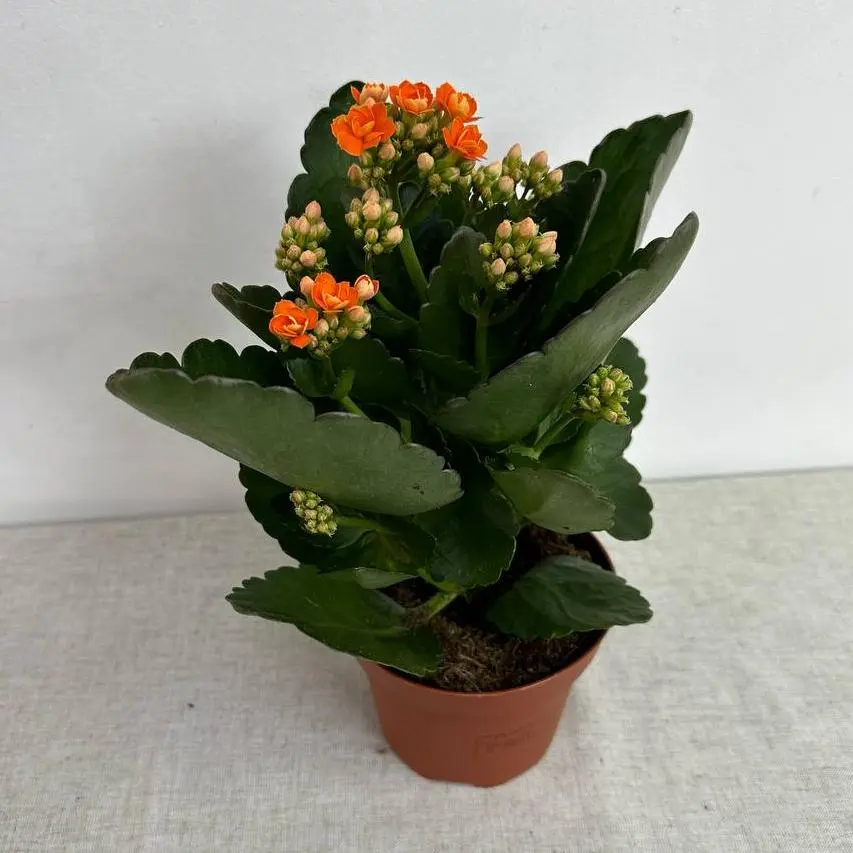
Kalanchoe is a great choice for indoor gardening due to its compact size and low-maintenance nature. It thrives in bright, indirect light and prefers well-draining soil to prevent root rot. This plant is quite tolerant of dry conditions, making it a good option for those who might not always remember to water regularly.
One of the best things about Kalanchoe is its versatility in design. It looks stunning when planted in a decorative container, such as an old teacup, adding a vintage charm to your indoor garden. Just be sure to drill a hole in the bottom for drainage to keep the plant healthy. With its wide array of colors and easy care requirements, Kalanchoe is a perfect choice for adding a pop of color to any room.
Conclusion
Tiny plants offer a world of possibilities for enhancing your indoor garden. From the delicate Baby’s Tears to the bold Purple Shamrock, there’s a plant for every taste and space. These small plants not only add beauty to your home but also bring a sense of tranquility and joy as you care for them. Whether you’re a seasoned gardener or a beginner, these petite wonders are sure to inspire and delight. I hope this guide has helped you discover the perfect tiny plant for your indoor oasis. Don’t forget to subscribe to my blog for more gardening tips, and feel free to share your thoughts and experiences in the comments below!

